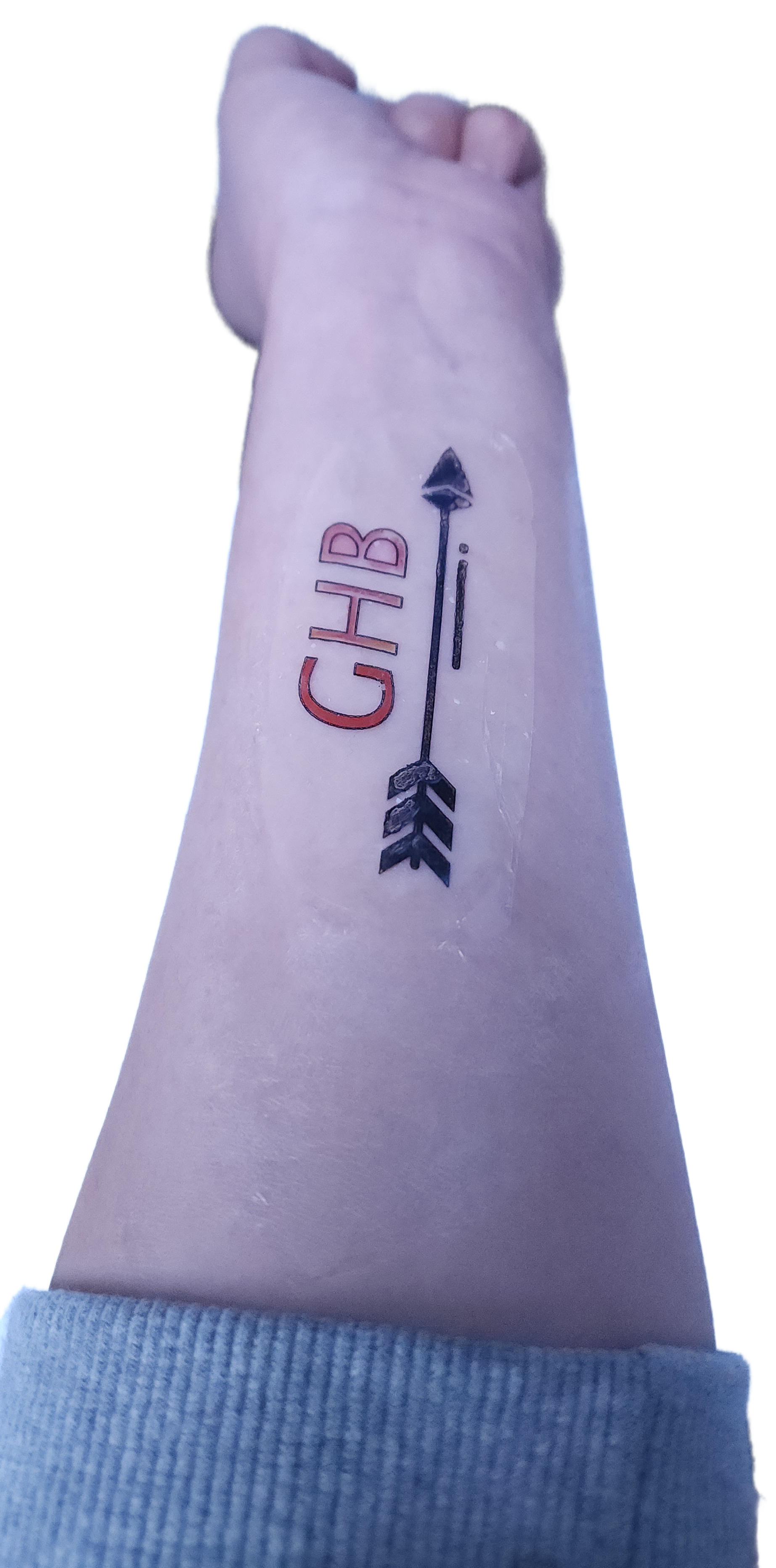
Scientists have created a temporary tattoo that can detect if a drink has been spiked with just a couple drops.
The sticker, which is applied to the skin, can detect the presence of the drug Y-hydroxybutyrate (GHB) even in low concentrations within one second.
Commonly used to spike drinks, the central nervous system depressant drug Rohypnol, known as roofies or GHB, has been liked with sexual assault.
It causes drowsiness, slows down your breathing and reduces heart rate.
These drugs are colourless, tasteless and induce a stupor in victims that is similar to severe alcohol intoxication – leaving people vulnerable to sexual assault.
The prevalence of spiking is high with 11 per cent of UK adults report being spiked at any point in their lives, according to Drinkaware.
It added that 9 per cent of men and 13 per cent of women have reported their drink being spiked.
There are ways people can protect themselves from drink spiking, with specialised strips and cards that change colour when exposed to these drugs.
But many of these drug testing kits are conspicuous or take minutes to report a result.
In the study published in the journal ACS Sensors, researchers in South Korea set out to develop a rapid-acting test for GHB that’s worn on the skin using a tattoo-like sticker.

Gyeong-Ji Kim, Jai Eun An, Kyong-Cheol Ko, Oh Seok Kwon and colleagues created the stickers by placing a mould over the top of a thin plastic film decorated with tattoo-like designs.
They poured a gel mixture into the mould which contained a chemical receptor that turns red when it detects GHB.
The back of the sticker was then coated with a diluted glue solution, so it could stick to skin.
Researchers tested the sticker’s ability to detect small amounts of GHB in a variety of beverages: whiskey, vodka, beer, soju (a Korean alcoholic beverage) and coffee.
The drug was detected within one second of coming into contact with the contaminated drinks. It even changed colour when it detected levels of the drug lower than what would induce serious physiological symptoms – 0.01 micrograms of GHB in 1 millilitre of beverage.
The sticker is designed to be able to discreetly dip a finger into a drink, touch the drop to the sticker and see the result almost immediately.
A positive result displays for up to 30 days after detection, which could be important if it’s needed as a form of evidence of tampering.
The researchers say that their sticker technology is inexpensive and easy to manufacture, and it could be commercially available soon.




